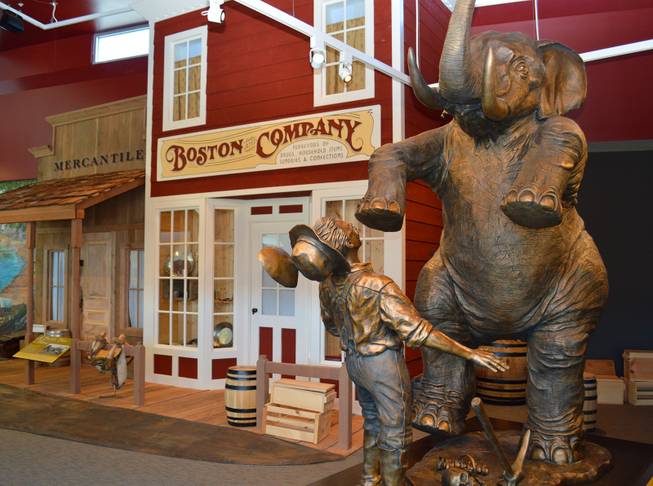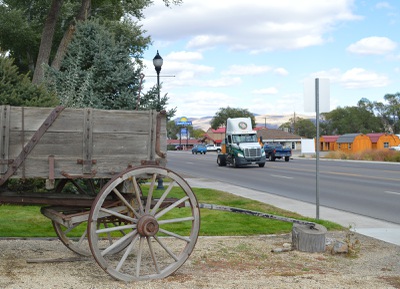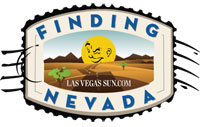
A statute of an emigrant confronting an elephant welcomes visitors at the California Trail Interpretive Center, west of Elko.
Sunday, Sept. 29, 2013 | 11 a.m.
The more we travel, the more we hear about the “gotta go’s,” as in, “When you go to Tonopah, you gotta go to the Mizpah Hotel.”
And people are normally correct. Today, we’re going to try to hit a “gotta go” or two – Lamoille Canyon near Elko, for example – and will report on the experience later.
Yesterday, we found a new “gotta go” — the California Trail Interpretive Center, which is eight miles west of Elko. It’s run by the Bureau of Land Management and it tells the story of the emigrants who made the trek across the West to California during the Gold Rush.
It’s well done and provides a real insight into what the pioneers went through.
One of the curious things is the use of an elephant through the center — a large statute of a surprised man confronting an elephant greets visitors, and there are other elephant sightings, as they call them. The elephant comes from a colloquial term used in many of the journals of the day that expressed the unbelievable nature of what people were seeing and enduring. It was a way of saying you have to see it to believe it. For example:
“Started over the mountains and oh, such a road,” wrote William Fowler Pritchard in 1850. “I have certainly seen the elephant on these mountains.”
Or:
“Oh surely we are seeing the elephant, from the tip of his trunk to the end of his tail,” wrote Lucy Rutledge Cook in 1852.
The full story of the Donner Party is there, providing details on the group’s entire trek, which shows several mistakes along the way. Aside from the Donner expedition, this was a difficult journey, and a tour of the center makes that clear. Wander around outside — away from the air conditioning, bottled water and paved roads, and — despite traffic on Interstate 80 rushing by and ringing cellphones — you can imagine it 160 years ago.
The trip with oxen pulling a wagon would have taken 4 ½ months; today climb into a car in St. Joseph, Mo., a popular starting point, and you can be in Sacramento, Calif., within a couple of days.
To put the trip in a little more perspective, as we pulled in we saw a row of Ford Model A's in the parking lot preparing to leave. It was a group from the Reno-Carson City area on a trip. They had gone up to Jarbidge, up near the Idaho border, which is a journey of its own even in a modern vehicle. But they made it just fine. A spry woman with a cane joked that it would be better if the seats were softer.
And off they went back toward the old California Trail.
We’re off in the Land Rover to head south.
If you have any "gotta go's," please send them to: [email protected].

 Follow along as the Sun explores and defines Nevada
Follow along as the Sun explores and defines Nevada
Join the Discussion:
Check this out for a full explanation of our conversion to the LiveFyre commenting system and instructions on how to sign up for an account.
Full comments policy